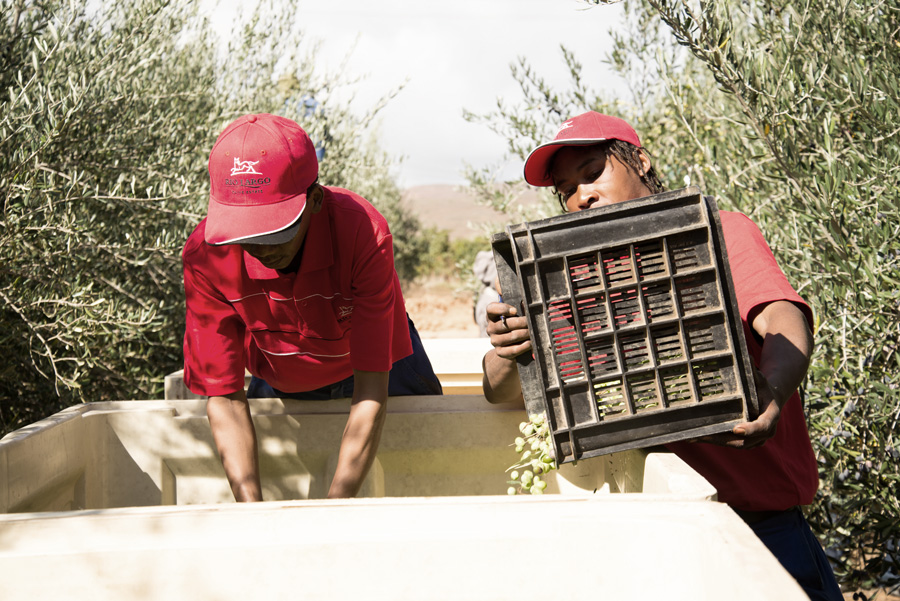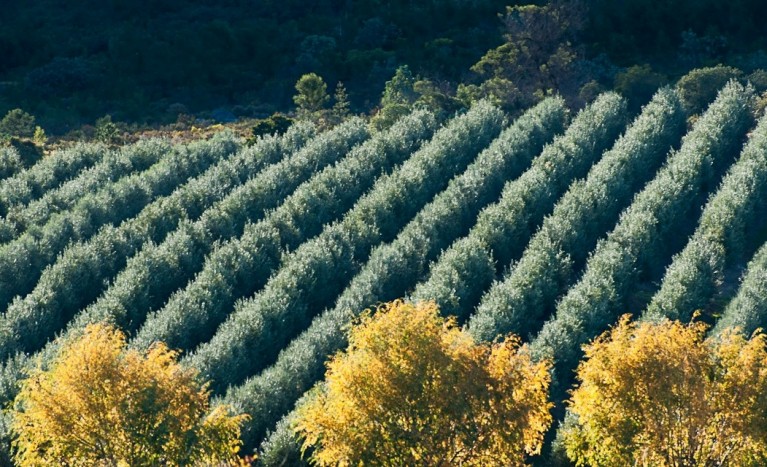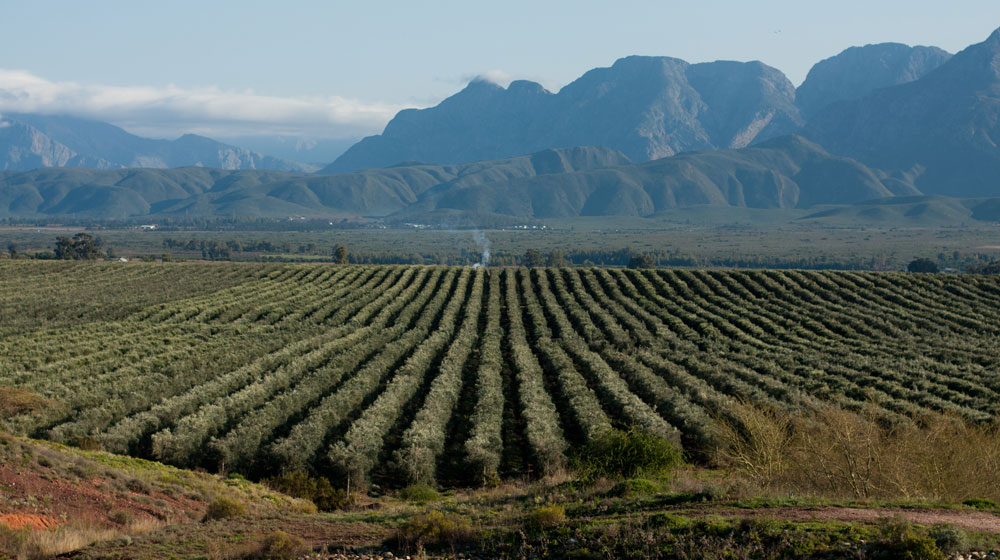
South Africa’s picturesque olive oil country. Source.
Compared to wine or brandy, South Africa’s olive oils are less well-known, and for good reason. They’re up against some of the stiffest competition the world has to offer, particularly the traditional powerhouses of Spain, Italy, and Greece, all of whose time-tested traditions are famous the world over.
But it would be a mistake to dismiss South Africa’s young olive oil industry out of hand. After all, while there are only about 160 olive oil producers in the country, they’ve won critical acclaim. The Rio Largo Estate, in particular, has been a standout, winning gold medals at the 2016 New York International Olive Oil Competition (NYIOOC), as well as at competitions in Los Angeles and Japan–despite only being founded in 2009.

Harvest time at Rio Largo. Source: Rio Largo Olive Estate.
But Rio Largo isn’t the only upstart South African olive oil producer. Oakhurst Olives won the Gold and Best in Class Awards at the 2014 NYIOOC, only two years after its maiden harvest in 2012. Judges were particularly fond of Oakhurst’s diverse palettes, which incorporated fruits, grass, chamomile, vanilla, and raspberry, among others.

The olive trees of Oakhurst Olives. Source: Oakhurst Olives.
Yet despite the young age of olive oil producers, olives themselves have been present in South Africa for almost three hundred years. Records show that the first olive trees were planted by farmer Jan van Riebeeck at his Cape estate in 1661, though olive oils were not produced until the 1900s, when waves of Italian immigrants brought valuable olive trees and critical knowledge to the region.
Perhaps one factor in South Africa’s success is that much of the nation’s terrain is quite similar to olive-producing regions in Europe and elsewhere. For instance, Willow Creek, a picturesque property nestled in the foothills of the Langeberg Range, touts its unique terroir, which boasts calcium-rich soils and a Mediterranean climate, allowing its Italian cultivars to flourish.

Willow Creek’s picturesque olive trees, shadowed by the Langeberg mountains. Source: Crush Magazine.
If you want to dive into South African olive oils but aren’t sure where to start, try this list. At the top is award-winning estate Rio Largo, followed by the acclaimed Morgenster (founded by Dutch settlers in 1711 and revitalized by an Italian immigrant to South Africa), and, of course, Willow Creek.

Historic Morgenster Estate. Source.
Whatever you buy, however, be sure to look for the CTC (Commitment to Compliance) seal of approval, which indicates that the olive oil is pure and falls within criteria set by the South African Olive Association. Unlike Italy, which has a well-documented history of adulterating olive oil with other seed oils or water, South Africa exerts rigorous quality control over its still-small olive oil industry.
Happy tasting!







